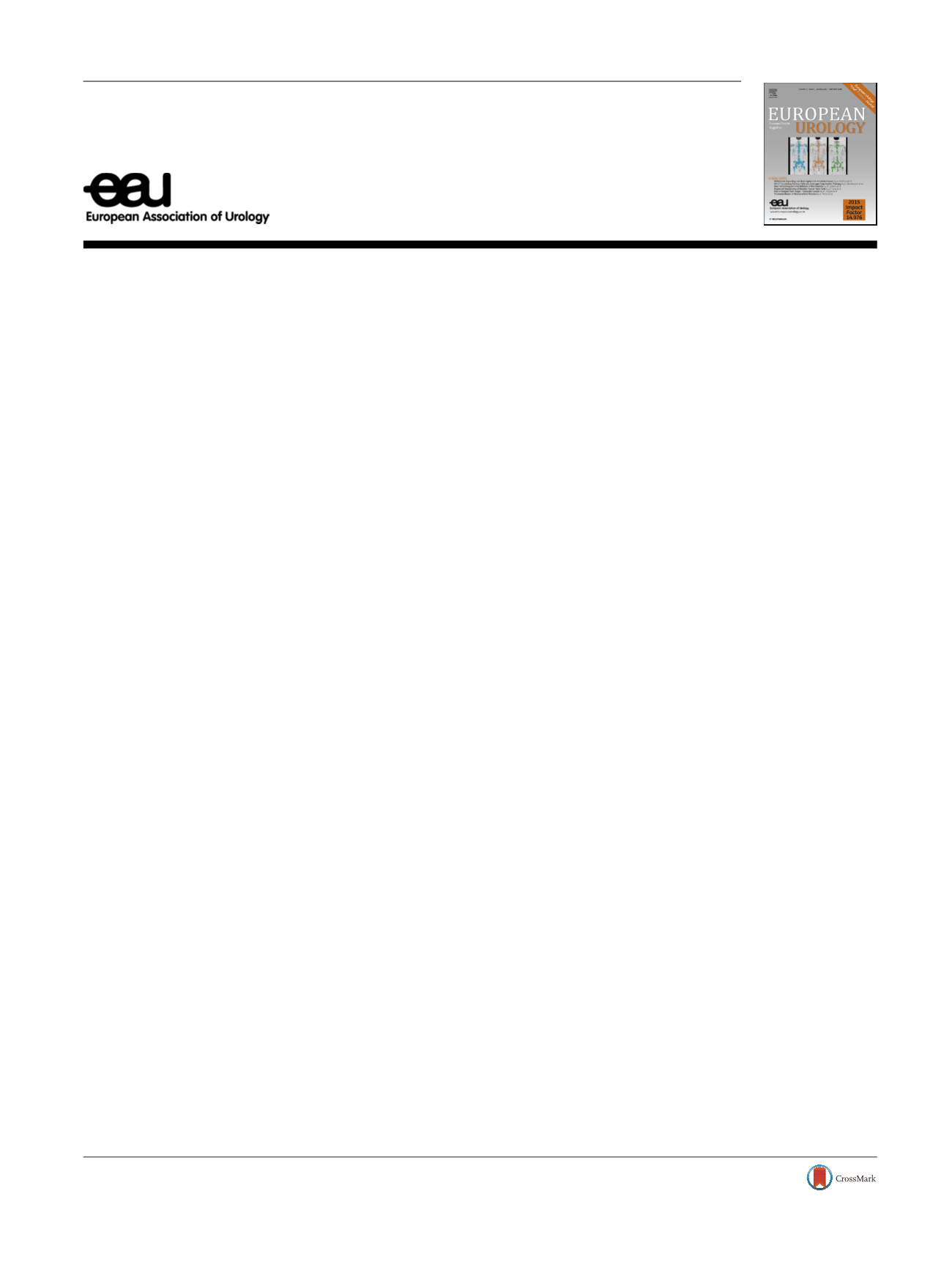

Letter to the Editor
Re: Philipp Mandel, Felix Preisser, Markus Graefen, et al.
High Chance of Late Recovery of Urinary and
Erectile Function Beyond 12 Months After Radical
Prostatectomy. Eur Urol 2017;71:848–50
Late Recovery of Erectile Function After Radical
Prostatectomy: Should We Modify the Way of
Assessment?
In the era of early detection and minimally-invasive
surgery for prostate cancer, the attention and the
expectations of both patients and clinicians towards
quality of life outcomes after prostate cancer treatment
is increasing in relevance. In this context, postoperative
urinary continence (UC) and erectile function (EF) have
been widely investigated showing a meaningful associa-
tion with
time from surgery to recovery
[1,2]. Mandel et al
[3]assessed the rates and probabilities of UC and EF
recovery after 24 mo and 36 mo from radical prostatec-
tomy (RP), specifically for those patients with urinary
incontinence and erectile dysfunction (ED) still at 12-mo
postoperative follow-up, showing a probability of recov-
ery at 24 mo and 36 mo of 38.6% and 49.7% for UC and of
30.8% and 36.5% for EF, respectively. We must be pleased
that more than one out of three patients continue to
improve in functional terms 1 yr from surgery and we
confirm and strengthen those findings with our results
(not yet published). At the same time, this observation
opens a number of thoughts regarding the proper
methodology of EF assessment in such a critical subset
of patients. Indeed, while the assessment of UC relies on
an objective user-friendly method, both for patients and
physicians (namely, the count of pads-used/d), the
validated International Index of Erectile Function (IIEF)
or its derived short-form (IIEF-5/Sexual Health Inventory
for Men) have been historically used to objectively
interpret EF. Mandel et al
[3]used an IIEF-5 threshold
of 18 points to define EF recovery after surgery and they
reported that of those with late-onset EF recovery, 75%
had a IIEF-5 score 12 at baseline (namely, 12-mo postRP)
assessment. Although the correct increase from baseline
to follow-up assessment has not been detailed throughout
the manuscript, it could be speculated that a considerable
number of men who eventually recovered postoperative
EF, could have actually
experienced
only a small increase
in their IIEF-5 score (ie, either 1 or 2 points) relying on
these type of tools, in order to reach the 18-point
threshold defining EF recovery. Bearing this in mind,
one would wonder what was the real clinical benefit
behind the reported EF improvement (and recovery). In
the attempt to translate the amount of IIEF-score changes
into clinical terms, Rosen et al
[4]introduced the Minimal
Clinically Important Differences criteria, thus defining the
smallest amount of change in the IIEF-EF domain score
that patients may actually feel as beneficial, allowing to
understand whether the patient had a real and perceived
significant EF improvement. According to these criteria, a
minimum change of 5 points should be considered as
meaningful for patients with moderate ED at baseline, as
for two-third of those men who recovered EF in Mandel
et al’s
[3]cohort, thus possibly leading to a re-estimation
of the reported 30% probability of EF recovery after 12 mo
from surgery. To this regard, while we are aware of the
strong evidence reported in the current and in previous
studies
[5], clearly suggesting the possibility for RP
patients to recover from ED at least up to 36 mo after
surgery, we consider that Minimal Clinically Important
Differences criteria could be probably more suitable to
analyse IIEF-EF domain/Sexual Health Inventory for Men
changes after RP, in order to provide a more accurate
and clinically perceptible evaluation of patients reporting
an improvement of EF scores at long-term follow-up
after RP.
Overall, in the era of postoperative
quality-of-life out-
comes
, as physicians strongly involved in the field of men’s
quality of life after RP, we need to apply the best available
assessment tools in order to properly counsel patients and
avoiding potential regrets associated even with the best
ever surgical technique.
Conflicts of interest:
The authors have nothing to disclose.
References
[1]
Salonia A, Adaikan G, Buvat J, et al. Sexual rehabilitation after treatment for prostate cancer-part 1: recommendations from the E U R O P E A N U R O L O G Y 7 2 ( 2 0 1 7 ) e 1 7 7 – e 1 7 8ava ilable at
www.sciencedirect.comjournal homepage:
www.eu ropeanurology.comDOI of original article:
http://dx.doi.org/10.1016/j.eururo.2016.09.030.
http://dx.doi.org/10.1016/j.eururo.2017.07.0010302-2838/
#
2017 European Association of Urology. Published by Elsevier B.V. All rights reserved.
















